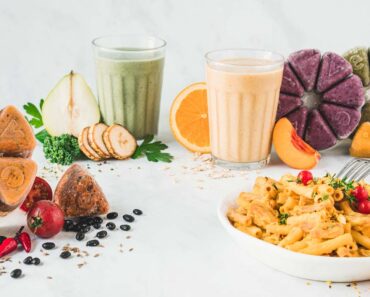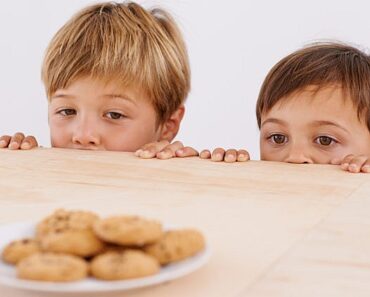Breast milk has immune-boosting components that are dynamic in responding to your baby’s needs—from age to time of day and even illness.
There’s a reason why breast milk is referred to as liquid gold: It has immune-boosting components that are dynamic in responding to your baby’s needs, making it a pretty amazing first food for your little one. Read on to discover the mind-blowing ways that breast milk changes, from composition to colour to taste.
1. Breast milk changes as your baby grows
In the beginning, breasts produce thick, honey-textured colostrum packed with immunological components that protect your newborn. “It’s basically like a baby’s first vaccination,” explains Taya Griffin, an international board-certified lactation consultant. She explains that one of the major immune boosters is called secretory immunoglobulin A (SIgA), which coats the internal organs and lining of the digestive, respiratory and reproductive tracts. “SIgA doesn’t let bacteria and pathogens get in through the gut, so it protects your baby from the inside out,” says Griffin. Colostrum, which Griffin says is lower in some nutrients (such as lactose and fat) than mature milk and higher in others (such as protein and potassium), is designed to suit your newborn’s growing body.
After giving your baby an initial immune-system supercharge (and clearing the intestines of meconium) in the first two or three days, your breast milk changes again and increases in volume, says Griffin. Known as transitional milk, it lasts roughly three to seven days and gradually transforms into mature milk by the two-week mark. This mature milk that the baby gets for the first year isn’t radically different from colostrum—it still has all of the same properties but is more diluted for a higher volume of milk, says Ashley Pickett, an international board-certified lactation consultant.
The next major change begins when your child hits the toddler years. The volume of milk you produce declines, which concentrates the immunological components. “The milk starts to decrease because babies are eating and drinking other foods, so it develops more antibodies and higher fat content,” says Attie Sandink, a board-certified lactation consultant and registered nurse. It’s definitely worth nursing a child into the second year and beyond, adds Pickett, explaining that breast milk, alongside a wide variety of solid foods, can boost a child’s immune system and help meet his nutritional and emotional needs. In fact, both the Canadian Paediatric Society and World Health Organization recommend nursing for up to two years and beyond.
2. Breast milk changes during growth spurts and illnesses
While mature milk remains fairly consistent in terms of its proteins, fat and sugar content during that first year, it can be quite responsive to micro-level changes due to factors like the mother’s diet, bacteria and viruses in the environment, and the baby’s feeding behaviours. Teresa Pitman, a La Leche League leader and co-author of The Womanly Art of Breastfeeding, notes that a baby will nurse frequently for several days during a growth spurt which helps to increase the fat content in the milk. Breast milk can also change when your baby is sick or you are exposed to illness. In fact, researchers believe that when a baby is sick, she passes on a cue through her saliva that sends a signal to her mother’s body to produce more milk with illness-specific antibodies. Magical, right? Similarly, if the breastfeeding mother is exposed to a virus, she will produce antibodies that get passed on to the baby for protection, says Pickett. And during the COVID pandemic, studies showed that previously infected or vaccinated moms were able to pass active, protective antibodies to their babies through breastmilk.
3. Breast milk changes from day to night
According to experts, breast milk changes throughout the day and night. Many nursing women notice greater volume and faster flow in their breast milk in the early hours of the day, which Pickett says may be due to higher levels of prolactin, a hormone that helps produce milk, at that time. The breast milk that’s produced at the end of the day is also designed to help your little one get rest. “Evening milk contains more serotonin and other elements to help the baby sleep,” says Sandink.
4. Breast milk changes during a feeding
You may have heard that the milk at the beginning of a feed, called foremilk, is more watery while the milk at the end, called hindmilk, is fattier. It’s true that the fat in breast milk increases gradually during a feeding, but that doesn’t mean that hindmilk is better than foremilk. Griffin says that keeping a baby on one side for too long to ensure that she gets that fat without making sure that the baby is actively drinking is counterproductive because she may just hang out there, only sucking, and not get enough milk. For this reason, it’s important to know what drinking looks like and to switch back and forth between breasts whenever you think your baby has stopped. “If the mom is feeding her baby when she asks to be fed and keeps her drinking so that she is not falling asleep at the breast, then she will get the right composition of milk,” explains Griffin.
5. Breast milk changes colour
There’s a wide range of normal when it comes to the colour of breast milk, says Sandink. Bluish, yellow, cream and orange are some of the possibilities, and they’re all fine for your baby. Pickett notes that medicine can affect the colour of your breast milk—an antibiotic called minocycline can even turn it black (don’t worry, it’s safe to drink, but you should alert your healthcare provider nonetheless).
The only change to take note of is when breast milk is pink, red or rusty, which could indicate blood in your milk from damaged nipples or other issues deeper in the breast. It’s totally fine for your baby, but it’s a good idea to get checked out, says Pickett. At the very least, a lactation consultant can help sort out and fix what’s causing the nipple trauma. It’s especially important to see a lactation consultant or doctor if there’s blood in your milk but your nipples are OK. “If there isn’t any nipple pain or damage but mom’s milk has blood in it, I might be worried about other things happening in the mother’s breast,” explains Pickett. “I’d want her to see a doctor and be sent for an ultrasound because sometimes cancers and other things can cause blood to come through the milk.” Most of the time, blood is nothing to worry about, but getting checked will give you peace of mind and help you keep nursing.
6. Breast milk changes flavour
The food you eat can change the flavour of your breast milk, though some tastes last longer than others. A 2008 study in the journal Physiology and Behaviour noted that the flavour of menthol lasted longest, while the taste of banana was only found up to an hour after it was eaten. A 2001 study published in Pediatrics showed that babies whose mothers drank carrot juice over the time they were nursing seemed to prefer carrot-flavoured cereal over plain cereal. The effect of food on breast milk can impact other senses, too. A 2016 study in the journal Metabolites found that eating raw garlic changed the smell of breast milk in some participants.
The composition of breast milk affects flavours as well. The higher sodium content in colostrum means that it tastes salty, says Griffin. This is something she learned first-hand when her eldest child, then three, was nursing while Griffin was pregnant and her milk was transitioning back to colostrum. “She started to tell me that the taste of the milk was changing, from what she always described as tasting like honey. She started saying that the milk tasted like Marmite, which is very salty.” Meanwhile, some moms have excess lipase, an enzyme that breaks down fat in the milk, which can cause pumped milk to taste soapy. It’s fine for your little one to drink, but if your baby is bothered by the taste, you can heat it to a scalding temperature before storing it in the fridge or freezer to help correct the flavour.

































